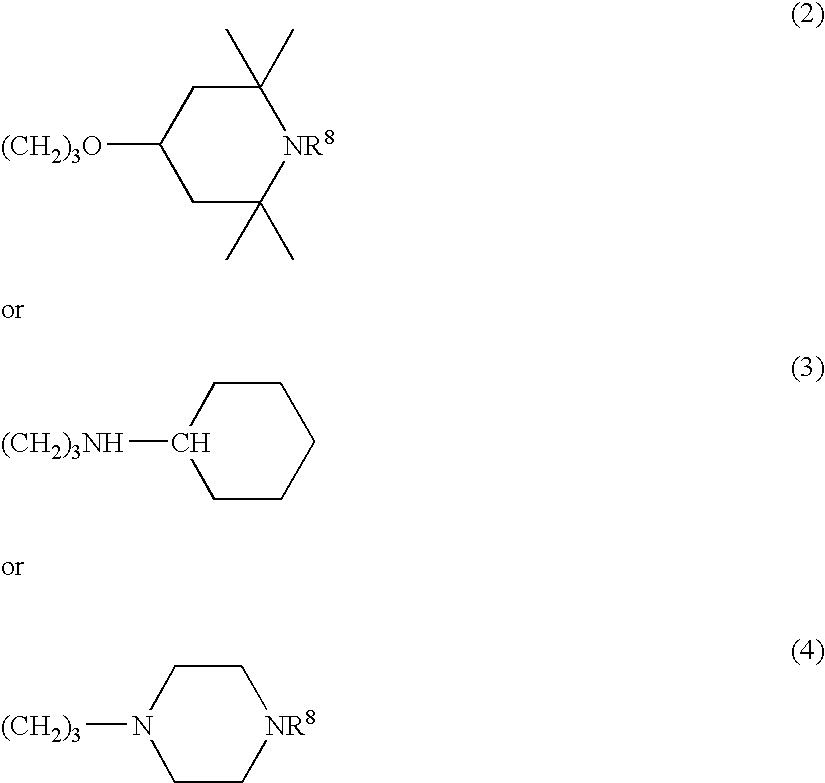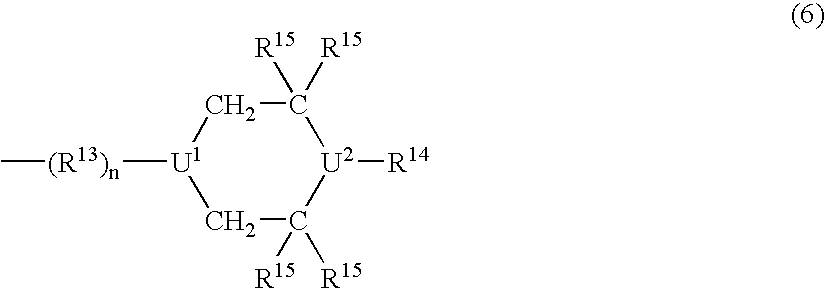Fabric softener compositions
a technology of compositions and softeners, applied in the field of fabric softener compositions, can solve the problems of accumulation of build-up through the wash cycle, fabric discoloration, unpleasant feeling to wearers, etc., and achieve the effect of excellent strength and not prone to tear or separation
- Summary
- Abstract
- Description
- Claims
- Application Information
AI Technical Summary
Benefits of technology
Problems solved by technology
Method used
Image
Examples
example 2
Antipilling
The formulated rinse conditioners (see Table 1) are applied according to the following procedure:
Textile swatches are washed in a washing machine, rinsed and dried. The antipilling properties are evaluated after 1 wash / rinse-cycle. The textile used is: Cotton knit: 163 g / m2, bleached The textile is finished with a resin according to Oekotex Standard 100: 30 g / l of modified dimethyloldihydroxyethylene urea (60% active material) 9 g / l Magnesiumchloride (with 6H2O) padding with a pick-up of approximately 60% Drying at about 110-120° C. in a oven followed by a 4 minute curing step at 145° C.
Cotton knit swatches of size of 50 cm by 40 cm are washed together with ballast material (cotton and cotton / polyester) in a AEG Oeko Lavamat 73729 washing machine maintaining the washing temperature at 40° C. The total fabric load of 1 kg is washed for 15 minutes with 33 g of ECE Color Fastness Test Detergent 77 (Formulation January 1977, according to ISO 105-CO6). The rinse co...
PUM
| Property | Measurement | Unit |
|---|---|---|
| temperature | aaaaa | aaaaa |
| temperatures | aaaaa | aaaaa |
| weight | aaaaa | aaaaa |
Abstract
Description
Claims
Application Information
 Login to View More
Login to View More - R&D
- Intellectual Property
- Life Sciences
- Materials
- Tech Scout
- Unparalleled Data Quality
- Higher Quality Content
- 60% Fewer Hallucinations
Browse by: Latest US Patents, China's latest patents, Technical Efficacy Thesaurus, Application Domain, Technology Topic, Popular Technical Reports.
© 2025 PatSnap. All rights reserved.Legal|Privacy policy|Modern Slavery Act Transparency Statement|Sitemap|About US| Contact US: help@patsnap.com



